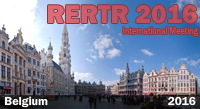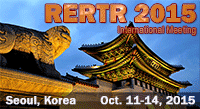IAEA/USA Interregional course on
Preparations to Ship Spent Nuclear Fuel (1997)
TRIGA Fuel Classification
Spent Nuclear Fuel
Transfer Data Form
APPENDIX A
![]() PDF version available
PDF version available
DOWNLOAD full paper in PDF format.
Contact:
Mr. Kraig M. Wendt
Lockheed Martin Idaho Technologies
P.O. Box 1625
Idaho Falls, ID 83415-5306
Tel.: +1-208-526-3860
Fax: +1-208-526-7112
E-mail: [email protected]
IAEA/USA Interregional Training Course
Technical and Administrative Preparations Required for Shipment of Research Reactor Spent
Fuel to its Country of Origin
13-24 January 1997
Argonne, IL
Lecture L.3.2
TRIGA Fuel Classification
Spent Nuclear Fuel
Transfer Data Form
APPENDIX A
Presented by
Kraig M. Wendt
Lockheed Martin Idaho Technologies of the INEL
Appendix A, Section 1.1
Fuel Name and Type:
Fuel Producer:
Reactor Name:
Location:
Contact Name:
Telephone:
Telefax:
E-mail:
Appendix A, Section 1.2:
New Fuel Description
Physical Description
1. Fuel Dimensions and Shapes
2. Fuel Components
3. Fuel Configuration as Shipped
4. Fuel Weights
Appendix A, Section 1.2
Drawings and physical description of fuel rods
The following are preferences of acceptable drawings/descriptions of spent
nuclear TRIGA fuels:
1. Fabrication schematics with tabularized physical data
2. Summation drawings (examples follow) with physical
data documented in margins
3. Tabularized physical data with written descriptions
Appendix A, Section 1.3:
Shipping Package Description
Description of Shipping Process
The information need not be provided if you are using any cask for which facility
safety documentation exists at the INEL:
Appendix A, Section 1.3:
Shipping Package Description
If you are planning to use a different Spent Nuclear Fuel Cask, then two (2)
copies of each of the following documentation must be provided:
1. Copy certificate of compliance or certificate of competent authority
2. Safety analysis report for packaging (SARP)
3. Poison, poison inserts, spacers and related certificates
4. Decontamination procedures and precautions
5. Load test certification of lifting/handling components
6. Detailed drawings of package showing at least the following information:
a. Dimensions
b. Weights
c. Surface finish (roughness, painting, coatings,...etc.)
d. Materials of construction
e. Other information pertinent to handling and unloading
7. Drawings of package handling devices showing the following information:
a. Type of load bar or lifting yoke
b. Lid removal tools, sizes and description of lid bolts
c. Special fuel removal tools, if any
d. Crane attachment details
e. Other information pertinent to handling and unloading
8. Descriptive photographs of the package
9. List of handling and loading/unloading equipment furnished
10. Diagrams involving lifting/handling configurations of the cask container
including lifting points, boxes, spacers, tie downs
11. Loading/unloading and handling procedures
Appendix A, Section 2.1:
New Fuel, Fuel Materials Description
1. Fuel Type (Rod, Pellet, etc.)
2. Chemical form and fabrication (UZrHx, UO2, etc.)
3. Initial fissile material enrichment U-235, Pu-, Th, etc. material & weight,
% enrichment
Material 1_________
Weight________%________Uncertainty__________
Material 2 _________
Weight________%________Uncertainty__________
4. Fuel additives (Alloys, organics, poisons, etc), weight
Material 1 _________ Weight________%________
Material 2 _________ Weight________%________
Provide weight basis per element
Appendix A. Section 2.2:
New fuel, Cladding Materials Description
1. Cladding Material (Zr, Al, Stainless Steel,...etc.)
2. Cladding thickness (mm):
Appendix A, Section 2.3:
Other Materials of Construction
Material 1 _________ Weight________or
%_____Characteristic___________
Material 2 _________ Weight________or
%_____Characteristic___________
Appendix A, Section 3.1:
Spent Fuel, Operation History
1. Unit identification (ID NO.)___________________________
2. Unit burnup (Cumulative Fission)__________________
Provide as megawatt-days/metric ton of fissile material
3. Operating or burn-up history of the fuel
4. Isotopic listing contributing top 95% of radiation
5. Date of last criticality:_________________________
Appendix A, Section 3.2:
Spent fuel, Operating History
Physical condition of the fuel elements:
1. Pictures/videos
2. Estimated cladding corrosion with water chemistry
Appendix A, Section 3.3:
Description of Canned/Recanned Fuel
If you are planning to use a can, or if the spent fuel is already canned,
the information and documentation listed under items 1 through 6 of this section
(Section 3.3) must be provided.
1. All canned fuel will be opened and repackaged
2. Can must be certified with SARP plus receipt and
shipping facility acceptable




